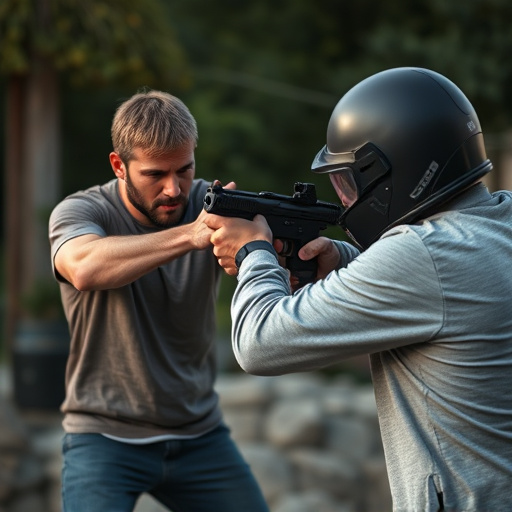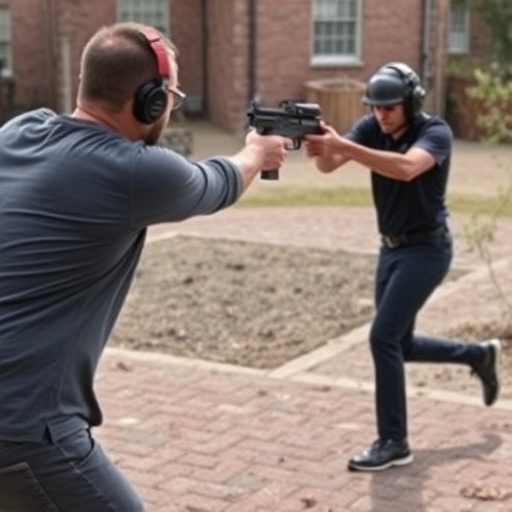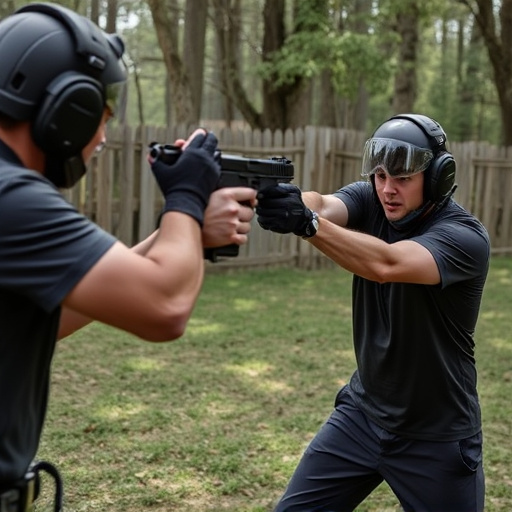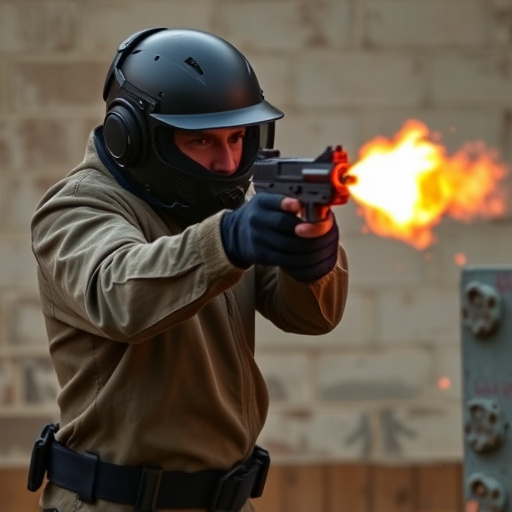Electrical arc displays, known as stun guns or Tasers, are versatile self-defense and law enforcement tools using high voltage, low amperage (HVLA) technology to temporarily incapacitate targets without permanent harm. Global regulations govern their use, with strict criteria for the most powerful legal stun weapons (HVLA models), including licensing and training requirements. These devices act as powerful deterrents, offering a safe escape window in dangerous situations. Law enforcement and industrial sectors utilize them effectively, prioritizing safety alongside potency. Future models will incorporate advanced features while maintaining legal standards, enhancing their reliability as the most powerful legal stun weapons.
Electrical arc displays, or stun weapons, have garnered significant attention for their potential as formidable deterrents. This article delves into the intricate dynamics of these devices, exploring their power and intimidation factor. We analyze the legal framework governing their use, dissecting the delicate balance between effective deterrence and user safety. Through real-world case studies, we assess their practicality, while peering into future trends shaping the landscape of most powerful legal stun weapons.
- Understanding Electrical Arc Display Dynamics
- Legal Framework for Stun Weapon Use
- Power and Intimidation: A Complex Relationship
- Effective Deterrence vs User Safety
- Case Studies: Real-World Applications
- Future Trends in Legal Stun Weapons
Understanding Electrical Arc Display Dynamics

Electrical arc displays, often referred to as Stun Guns or Tasers, are powerful tools designed to intimidate and subdue individuals quickly and effectively. Understanding their dynamics is crucial when considering them as a means of self-defense or law enforcement tool. These devices operate by using electrical current to disrupt muscle control, causing the targeted person to lose balance and become temporarily incapacitated.
The most powerful legal stun weapons on the market employ high voltage, low amperage (HVLA) technology, ensuring safety for users while delivering a significant shock. This technology allows for precise targeting without causing permanent harm. The intensity of the arc display can vary, with some models offering adjustable settings to suit different situations and needs, making them versatile tools in various security scenarios.
Legal Framework for Stun Weapon Use

The legal framework surrounding stun weapon use varies significantly across jurisdictions, reflecting a delicate balance between public safety and individual rights. In many countries, ownership and carrying of stun devices are strictly regulated, with licensing requirements and permitted uses dictated by local laws. This is especially true for what are considered the most powerful legal stun weapons, which often require extensive training and a demonstrated need for self-defense or law enforcement purposes.
For instance, some regions permit only law enforcement agencies to use high-voltage stun guns, while others allow civilians with proper certification. The regulations also cover factors like maximum voltage, energy output, and the specific circumstances under which such devices can be employed legally. These laws aim to ensure that stun weapons are used responsibly and only when necessary, thereby minimizing potential harm while maximizing their effectiveness in de-escalating dangerous situations.
Power and Intimidation: A Complex Relationship

Power and intimidation go hand in hand, especially when discussing the most effective tools for self-defense. In the context of electrical arc displays, the raw power on display can be a formidable deterrent, making them seemingly intimidating to the untrained eye. These devices, often considered among the most powerful legal stun weapons available, harness electric current to deliver a jolt that can incapacitate an opponent momentarily, providing users with a crucial window of opportunity for escape or intervention.
The intimidation factor stems not only from the visible display of power but also from the potential consequences associated with electrical arc shocks. The rapid discharge of electricity creates a bright flash and intense heat, effectively communicating the device’s capabilities to any would-be assailants. This visual spectacle can deter attacks before they escalate, making these stun weapons more than just powerful tools; they serve as a psychological barrier, reinforcing personal safety and security measures.
Effective Deterrence vs User Safety

When considering the intimidation factor of electrical arc displays, it’s crucial to differentiate between effective deterrence and user safety. While the sight of a powerful electric arc can certainly deter potential threats, the primary focus should be on ensuring the safe handling of such devices. Using the most powerful legal stun weapons, for instance, isn’t solely about intimidating; it involves understanding and mitigating risks associated with high-voltage energy discharge.
User safety protocols are essential to prevent accidental harm or injury during operation. Effective deterrence, on the other hand, should complement these safety measures by creating an environment where potential aggressors think twice before causing trouble. Balancing these two aspects ensures that the intimidation factor serves its purpose without compromising safety, making electrical arc displays versatile tools for various security applications.
Case Studies: Real-World Applications

In real-world applications, electrical arc displays have been utilized in various contexts, showcasing their intimidating capabilities as defensive tools. Case studies reveal that high-voltage arcs, when employed correctly, can serve as powerful deterrents against potential threats. For instance, law enforcement agencies have adopted stun devices based on this technology as the most effective non-lethal weapons. These stun guns utilize electrical arcs to incapacitate individuals temporarily, providing officers with crucial time to control and subdue suspects safely.
The effectiveness of arc displays is further demonstrated in industrial settings where they are used for remote disabling of potentially dangerous equipment. In extreme scenarios, these devices can disable vehicles or machinery instantly, preventing catastrophic failures and ensuring the safety of personnel. This application highlights the versatility and power of electrical arcs as a tool for both law enforcement and industrial safety protocols, solidifying their position as formidable defensive options.
Future Trends in Legal Stun Weapons

The future of legal stun weapons is an exciting prospect, as manufacturers strive to develop devices that are both effective and compliant with evolving legal standards. One prominent trend is the push for higher voltage and current outputs, aiming to create the most powerful legal stun weapons available. These advanced tools promise enhanced deterrence, ensuring public safety while adhering to strict regulations.
With advancements in technology, future models may incorporate innovative features such as smart sensors, adjustable settings, and improved durability. The focus on design that balances power with user-friendliness will likely grow, making these devices more accessible and reliable for law enforcement and self-defense enthusiasts alike.
The electrical arc display, a formidable tool for self-defense, presents a unique balance between power and intimidation. As our understanding of dynamics evolves and legal frameworks adapt, the focus shifts towards effective deterrence while prioritizing user safety. The exploration of real-world applications through case studies has illuminated the potential and limitations of these devices. Moving forward, advancements in legal stun weapons aim to provide law enforcement and citizens with the most powerful and safe options available, ensuring public safety without compromising deterrence capabilities.
